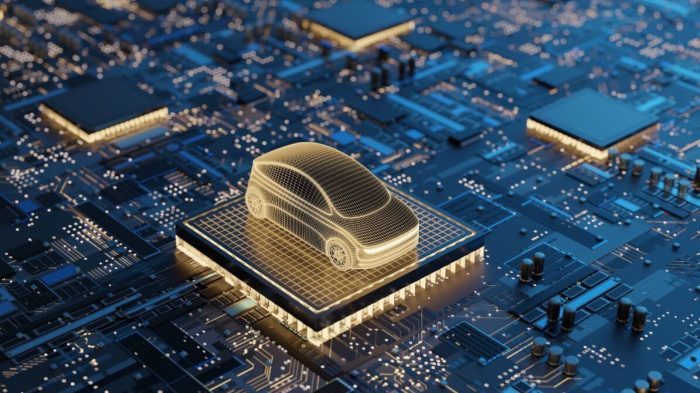April 2025 marks a significant milestone in the automotive industry. The rapid advancement and increasing adoption of autonomous driving features are transforming the way we experience transportation. This article delves into the current state of autonomous vehicle technology, exploring the key features gaining traction, the challenges remaining, and the future implications for drivers and the industry as a whole.
We will examine everything from Advanced Driver-Assistance Systems (ADAS) to fully autonomous vehicles (AVs), highlighting the technological leaps and societal shifts occurring in this rapidly evolving landscape.
The Expanding Landscape of Autonomous Driving Features
The term “autonomous vehicle” encompasses a wide spectrum of capabilities, ranging from basic driver assistance to fully self-driving functionality. In April 2025, we are witnessing a significant proliferation of features across this spectrum. Let’s break down some of the key advancements:
Advanced Driver-Assistance Systems (ADAS): The Foundation of Autonomy
ADAS features are already prevalent in many modern vehicles. These systems provide driver assistance, enhancing safety and convenience. In April 2025, we expect to see further refinement and expansion of these features, including:
- Adaptive Cruise Control (ACC): ACC maintains a safe following distance from the vehicle ahead, automatically adjusting speed to maintain that distance. Advancements include improved object recognition and smoother braking/acceleration.
- Lane Keeping Assist (LKA): LKA helps drivers stay within their lane by providing gentle steering corrections. More sophisticated systems now incorporate lane centering and can even handle slight curves autonomously.
- Automatic Emergency Braking (AEB): AEB systems automatically apply the brakes to avoid or mitigate collisions. Improvements in sensor technology are leading to better object detection and more effective braking.
- Blind Spot Monitoring (BSM): BSM alerts drivers to vehicles in their blind spots, significantly enhancing safety during lane changes. Integration with other ADAS features, such as lane change assist, is becoming increasingly common.
- Parking Assist Systems: These systems automate various aspects of parking, from parallel parking to perpendicular parking, reducing driver stress and improving parking efficiency. Advancements include improved sensor accuracy and the ability to handle more complex parking situations.
Levels of Autonomous Driving: Navigating the Spectrum
The Society of Automotive Engineers (SAE) defines six levels of driving automation. While fully autonomous vehicles (Level 5) are still under development, we are seeing significant progress in Level 2 and Level 3 systems in April 2025:
- Level 2 (Partial Automation): The driver remains responsible for monitoring the environment and is required to intervene at any time. However, features like adaptive cruise control and lane keeping assist can operate concurrently.
- Level 3 (Conditional Automation): The vehicle can control all aspects of driving under certain conditions, but the driver must be ready to take control when requested by the system. This level represents a significant step towards full autonomy, but requires careful consideration of liability and driver preparedness.
Challenges and Considerations in the Rise of Autonomous Vehicles
Despite the rapid advancements, several challenges remain in the widespread adoption of autonomous driving technology:
- Technological Limitations: Current sensor technology and artificial intelligence algorithms still struggle with unpredictable situations, such as adverse weather conditions, unexpected obstacles, and complex traffic scenarios. Robustness and reliability remain key areas for improvement.
- Regulatory Hurdles: The legal framework surrounding autonomous vehicles is still evolving. Clear guidelines on liability, data privacy, and safety standards are crucial for responsible deployment.
- Ethical Dilemmas: Autonomous vehicles face complex ethical dilemmas in accident avoidance scenarios. Programming algorithms to make life-or-death decisions requires careful consideration of ethical principles and societal values.
- Cybersecurity Concerns: Autonomous vehicles are increasingly connected, making them vulnerable to cyberattacks. Robust cybersecurity measures are essential to prevent unauthorized access and manipulation of vehicle systems.
- Infrastructure Requirements: The widespread adoption of autonomous vehicles may require significant improvements to existing road infrastructure, such as better mapping, improved communication networks, and dedicated lanes for autonomous vehicles.
- Public Acceptance: Building public trust and acceptance is critical for the successful integration of autonomous vehicles into society. Addressing public concerns about safety and reliability is paramount.
The Future of Autonomous Driving: Beyond April 2025
The advancements in autonomous driving technology are accelerating rapidly. Looking beyond April 2025, we can expect to see:
- Increased Level 3 and Level 4 deployments: More vehicles with conditional and high automation capabilities will become available, expanding the range of situations where autonomous driving is feasible.
- Improved sensor technology: Advancements in lidar, radar, and camera technology will lead to more accurate and reliable perception of the environment.
- More sophisticated AI algorithms: Machine learning and deep learning techniques will enable autonomous vehicles to handle increasingly complex driving scenarios.
- Greater integration with smart cities: Autonomous vehicles will become more seamlessly integrated with smart city infrastructure, optimizing traffic flow and improving urban mobility.
- New business models: The rise of autonomous vehicles will disrupt existing business models in the transportation industry, creating new opportunities for ride-sharing services, logistics companies, and other stakeholders.
Frequently Asked Questions (FAQ)
- Q: Are fully autonomous cars available in April 2025? A: While fully autonomous vehicles (Level 5) are still under development, Level 2 and Level 3 systems are becoming increasingly common.
- Q: How safe are autonomous driving features? A: The safety of autonomous driving features is constantly improving, but they are not foolproof. Drivers should always remain vigilant and be prepared to take control when necessary.
- Q: What are the legal implications of autonomous vehicles? A: The legal framework surrounding autonomous vehicles is still evolving. Liability in accidents involving autonomous vehicles is a complex issue that is being addressed by lawmakers worldwide.
- Q: How much will autonomous driving features cost? A: The cost of autonomous driving features varies widely depending on the level of automation and the vehicle model. Advanced features are typically available as optional extras on higher-end vehicles.
- Q: Will autonomous vehicles replace human drivers completely? A: While autonomous vehicles are expected to transform the transportation industry, it’s unlikely they will completely replace human drivers in the foreseeable future. Human drivers will likely continue to play a role in certain driving situations and contexts.
References
- SAE J3016: Taxonomy and Definitions for Terms Related to Driving Automation Systems for On-Road Motor Vehicles
- National Highway Traffic Safety Administration (NHTSA)
-Automated Driving Systems - [Add other relevant and credible sources here]
Call to Action
Stay informed about the latest advancements in autonomous driving technology. Follow industry news and research to understand the evolving landscape and its impact on your life. The future of transportation is being shaped today, and your engagement is crucial.

Source: neweagle.net
Clarifying Questions
What are the biggest safety concerns surrounding autonomous vehicles?
Major safety concerns include malfunctioning sensors, unpredictable responses to unexpected situations, and potential vulnerabilities to hacking or cyberattacks.
How will autonomous vehicles impact employment in the transportation sector?
The widespread adoption of autonomous vehicles could lead to job displacement for professional drivers, requiring retraining and adaptation within the workforce.
What infrastructure changes are needed to support autonomous vehicles?

Source: innoviz.tech
Significant infrastructure improvements are needed, including better road markings, improved communication networks, and the widespread deployment of 5G or similar high-bandwidth technologies.
What is the current legal framework surrounding autonomous vehicles?
The legal framework varies significantly across jurisdictions, with ongoing debates and evolving regulations concerning liability, safety standards, and data privacy.
